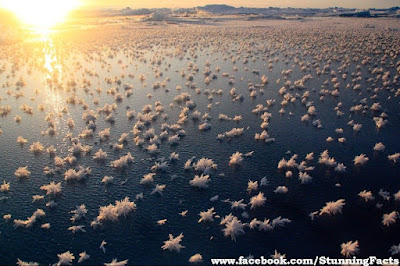Frost flowers bloom on fresh, thin sea ice, which makes it difficult to get close enough to study them. It was assumed that these structures were similar to hoar frosts, which form when water from supersaturated air – perhaps in the form of freezing fog – is deposited as ice crystals on a surface.
However, Grae Worster and Robert Style of the University of Cambridge found that frost flowers form mostly in still, dry air. The key factor is air that is much colder – by around 20 °C – than the water below the ice, they say.
Under these extreme circumstances ice vaporises into the dry air and then refreezes in the form of a frost flower. The pair confirmed this by recreating such conditions in the laboratory. They grew frost flowers from fresh water at 0 °C by cooling the surrounding air to around -25 °C.
The finding could change the way past climate is inferred from ice cores. High levels of salt in frost flowers have been assumed to come from sea spray kicked up by storms, but it now seems that these flowers can bloom in calm conditions.

0 comments:
Post a Comment